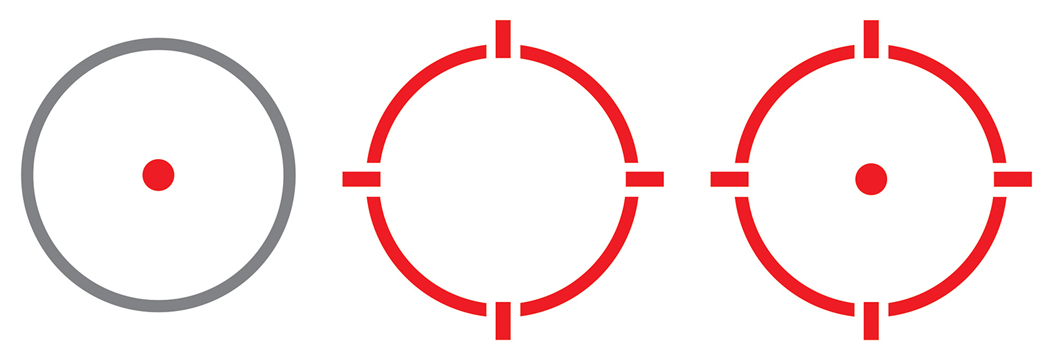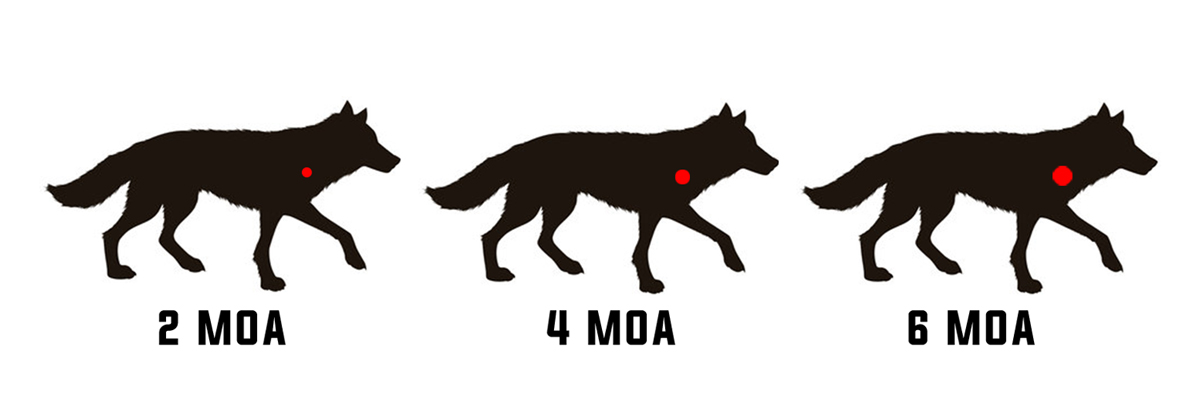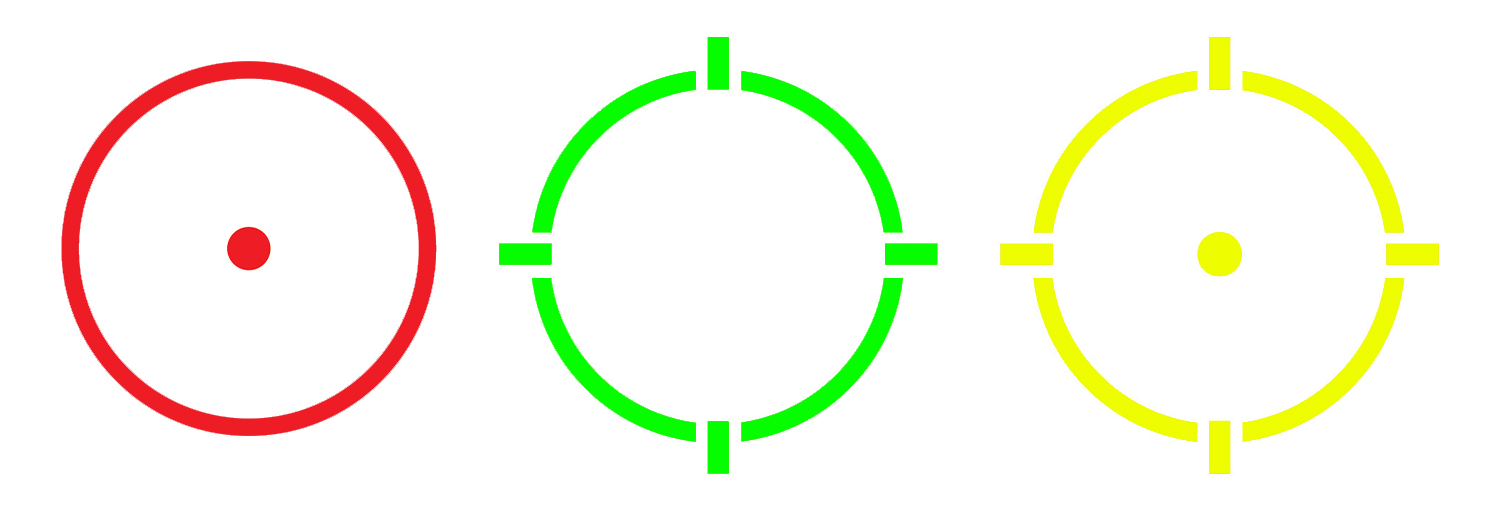3 Things to Consider When Choosing Your Red Dot Reticle
Posted by Trent Gander on on Jan 5th 2023
3 Things to Consider When Choosing Your Red Dot Reticle
Choosing a red dot can be confusing. There are so many options but they all provide some form
of reticle that allows us to aim easier. So what should we look for in a red dot reticle?
We’re going to go over three things you need to consider when you select a red dot for your
firearm.

1. Illumination Color: Red vs Green vs Amber/Yellow
While the term red dot implies that there are only reticle options in various shades of red, there
are a number of colors a red dot sight can have. The two most common are red and green with
a third option being amber or yellow.
But which is better?
There is a scientific answer to this and is related to how many cones we have in our eyes. Due
to how the brain processes color, we see combinations of reds, greens, and blues. This
combination creates every shade we see.
Of the various colors, we see the most shades of green. Which would indicate that green is the
best option, right? Wrong. While we see greens easily (both up close and at distance) most of
the outside comes in some shade of green. This can cause green reticles to blend in with some
environments.
To avoid this we should pick a reticle that isn’t green but still quick to pick up. This means that a
yellow reticle would technically be the fastest to pick up. This is because our eyes determine
that the most visible color in daylight is in the 550nm wavelength, which is between green and
yellow.
Yellow is also the fastest color to be seen at night, which would lead us to believe that a yellow
or similar reticle would be perfect for a red dot sight. The problem is that amber or yellow reticles
tend to wash out or be extremely hard to see in bright daylight.
We need something that creates enough of a contrast to overcome green environments,
daylight, and night. This leaves us with red.
Red provides the greatest contrast against most backgrounds, in most lighting conditions, and
requires less battery power to maintain. This means red reticles are the best choice for a red dot
sight.

2. Reticle Style: Dot vs Circle Dot
Next we have reticle styles. These are divided into the two major categories of dots and circle
dots.
Single dot reticles are the simplest of the reticles to have. They have a single point of aim, have
the least visual clutter, and are the easiest to understand. The red dot goes where you want
your shots to land. No extra guess work required.
However single dots are not as versatile as circle dots. Circle dots feature a center dot
surrounded with a large solid or semi-solid circle. The most famous version of this type of reticle
is found on Eotech Holographic sights, but red dot sights also feature this design.
The large circle allows for quicker sight pictures at close ranges. As long as the target is within
that circle you will hit without having to find that center dot. The circle can also be used as a
windage holdover for some longer distance shooting.
Some circle dots even have secondary dots below the center dot to allow for bullet drop. While
this is beneficial it generally is only useful when combined with a magnifier. Complex reticles
also draw slightly more power than a single red dot, but this won’t matter in the grand scheme of
things.
Depending on your intended use of the red dot, which reticle you choose will come down to
personal preference. For a simple, clear sight picture, a single dot reticle will be better. For a
wider range of uses, a circle dot reticle will provide you more options.

3. MOA Dot Size: 2 MOA vs 4-6.5 MOA
Red dot dots are measured by size in Minutes of Angle (MOA). This is a measuring system
used to predict bullet drops at distance using slight differences in angles. While this matters a lot
for long distance shooting, it does not apply as much to red dots.
A red dot of a particular MOA size is roughly that many “minutes” wide. That means if you put
your dot on a particular area on the target it will fall generally in the area covered by the dot.
Larger dots are easier to see but do not allow for as precise aim as smaller dots do.
Using a 2 MOA dot will allow you to have a much more refined aiming point than a 4-6.5 MOA
dot. These larger dots are beneficial if you are using a shotgun or are shooting at relatively
close distances.
A lot of newer shooters prefer the 4 MOA or larger dots because they are easier to use. They
don’t sway as much in the optic and are fairly easy to pick up quickly. However as they progress
in skill they tend to go to smaller dots over time, unless they have a particular need for a larger
dot.
Your red dot size will come down to personal preference and the shooting task you need the
sight for.

What would be the best Red Dot, Reticle, and Color Combination?
The best option for you will be a red reticle with your preferred dot size and reticle shape. While
this sounds like a cop out, it really comes down to your personal skill and the parameters you
have for the gun the sight is on.
The more complex reticle styles are designed to meet a broader set of needs than a simple dot.
A rifle set up for home defense might benefit from a larger singular dot or the circle in the circle
dot reticle. Longer range or more precision shooting will benefit from the smaller dot sizes while
circle reticles will need a magnifier to provide equal benefits.
What you are doing determines which dot and reticle you need. Knowing that first will help you
choose the correct red dot sight for you.

